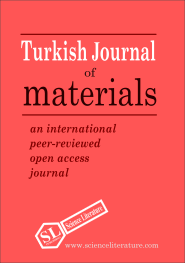Improving Properties of Highly Expansive Soil Using Waste Materials
Abstract
Expansive clay can be found in arid and semiarid regions. Such expansive soils are the natural threat for civil structures especially when they are lightly loaded. To avoid these circumstances, soil must be stabilized and strength is to be increased. By soil stabilization technique strength properties of soil can be improved by using some kind of admixtures. There is a large amount of wheat straw production from fields and micro silica fume as a by-product from silicon alloy industries. If this waste is utilized for soil stabilization then problem of solid waste can be resolved. In present investigation, as highly expansive soil is not available in Pakistan so it is prepared by mixing 50% of bentonite and 50% of local soil from Sahiwal (Pakistan) fields and a 16% of binary additive (37.5% wheat straw powder and 62.5% micro silica fume) is selected to study the effects of the engineering properties of problematic expansive soil. So in order to utilize the silica fumes and wheat straw powder for the improvement of expansive soil a detailed programmed study have been formulated where major factors like consolidation, swell-shrink behavior and shear strength have been studied. From different experimentation on soil with and without binary additive it was found that soil with binary additive has gained its strength appreciably.
Keywords: soil stabilization, expansive soil, index and engineering properties of soil, silica fumes, bentonite, powder wheat straw.
Full Text:
PDFReferences
B. Zamin, H. Nasir, K. Mehmood, and Q. Iqbal, “Field-Obtained Soil-Water Characteristic Curves of KPK Expansive Soil and Their Prediction Correlations,” Adv. Civ. Eng., vol. 2020, 2020, doi: 10.1155/2020/4039134.
A. Patel, “Geotechnical investigations and improvement of ground conditions,” 2019, Accessed: Oct. 30, 2021. [Online]. Available: https://www.scribd.com/book/398539462/Geotechnical-Investigations-and-Improvement-of-Ground-Conditions.
D. A. Cowan et al., “Effects of fuel characteristics on horizontal spread rate and ground surface temperatures of smouldering duff,” Int. J. Wildl. Fire, vol. 29, no. 9, pp. 820–831, Jul. 2020, doi: 10.1071/WF19207.
J. T. Balbo, “Pavimentação asfáltica : materiais, projeto e restauração,” p. 558, 2007, [Online]. Available: https://books.google.com/books/about/Pavimentação_asfáltica.html?id=Ra0uMwAACAAJ.
S. Mindess and M. Institute of Materials, “Developments in the formulation and reinforcement of concrete,” 2019.
Pijush Samui Dookie Kim Nagesh Iyer Sandeep Chaudhary, “New Materials in Civil Engineering - 1st Edition,” 2020. https://www.elsevier.com/books/new-materials-in-civil-engineering/samui/978-0-12-818961-0 (accessed Oct. 30, 2021).
A. J. Alrubaye, M. Hasan, and M. Y. Fattah, “Stabilization of soft kaolin clay with silica fume and lime,” Int. J. Geotech. Eng., vol. 11, no. 1, pp. 90–96, Jan. 2017, doi: 10.1080/19386362.2016.1187884.
Copyright (c) 2022 Turkish Journal of Materials

This work is licensed under a Creative Commons Attribution-NonCommercial 4.0 International License.
Indexing:









